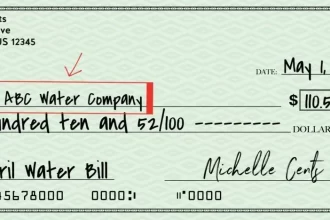If You encounter the mysterious “404 Error” while navigating websites. It’s like finding a dead end on an exciting journey, leaving visitors puzzled and frustrated. Let’s fixed the 404 errors, understand their implications, know how to redirect 404 to Homepage and explore ways to seamlessly guide users from a digital dead-end back to the heart of your online presence.
Defining the 404 Error
You’re exploring a website, clicking through its pages, and suddenly, you hit a roadblock – the infamous 404 Error. In simple terms, a 404 Error occurs when a user tries to access a page that doesn’t exist on the server. It’s like knocking on a door, only to find out that the house has vanished into thin air.
Impact on User Experience
The user experience takes a hit when visitors encounter a 404 Error. It disrupts the seamless flow of navigation, leading to frustration and a potential loss of interest in your website. Understanding and addressing these errors is crucial for maintaining a positive user experience.
Understanding the 404 Error
1. HTTP Status Codes:
HTTP, the protocol that powers the web, communicates through status codes. A 404 Error is a specific status code indicating that the requested page couldn’t be found on the server. Knowing the language of status codes helps in deciphering and addressing errors effectively.
2. Causes of 404 Errors
404 Errors can result from various factors, such as broken links, deleted pages, or mistyped URLs. Identifying the root cause is the first step towards resolving these issues and enhancing the overall user experience.
Importance of Redirects
1. Types of Redirects
Redirects act as virtual signposts, guiding users from one URL to another. Understanding the different types of redirects, particularly the 301 Redirect, is pivotal in efficiently managing and mitigating 404 Errors.
2. Implementing 301 Redirects
When pages undergo changes or restructuring, implementing 301 Redirects ensures that users and search engines are directed to the new location. This not only prevents 404 Errors but also preserves the SEO value of the old page.
Custom 404 Pages
1. Designing User-Friendly 404 Pages
Rather than presenting users with a bland error message, create custom 404 pages that are user-friendly and engaging. Design elements, humor, and helpful links can turn a frustrating experience into an opportunity to redirect users to relevant content.
2. Including Helpful Links and Navigation
A well-designed 404 page includes links to essential pages, helping users find their way back to relevant content. This approach not only improves user experience but also reduces the bounce rate.
Monitoring and Fixing 404 Errors
1. Google Search Console
Regularly monitoring your website through tools like Google Search Console allows you to identify and address 404 Errors promptly. This proactive approach ensures a smooth user experience and maintains the health of your website.
2. Regular Website Audits
Performing regular website audits helps identify broken links and potential 404 Errors. Addressing these issues promptly contributes to a positive user experience and helps in maintaining a well-functioning website.
SEO Implications of 404 Errors
1. Impact on Search Rankings
404 Errors can negatively impact your website’s search rankings. Search engines view broken links as a signal of a poorly maintained site, potentially affecting your overall SEO performance.
2. Preventing SEO Issues
Implementing best practices for handling 404 Errors is essential to prevent SEO issues. Regularly updating and fixing broken links, along with proper redirects, contributes to a healthier website and improved search engine rankings.
Tools for Identifying 404 Errors
1. Google Analytics
Utilize tools like Google Analytics to track and analyze user behavior. Identifying patterns related to 404 Errors allows you to take proactive measures to enhance your website’s performance.
2. Online Validators
Online validators can help scan your website for broken links and potential 404 Errors. Incorporating these tools into your regular maintenance routine ensures a proactive approach to resolving issues.
404 to Homepage redirects
First, you should generate a new file within your WordPress theme directory, naming it 404.php. If your theme already possesses a 404.php file, the necessary adjustments should be made to that existing file. To make modifications to this file, Go to your WordPress hosting account through either an FTP client or their file manager tool.

Once you are connected to your website, you will be able to see the 404.php file in your WordPress themes folder. You need to add the following code as the first line in your 404.php file:
<?php
header("HTTP/1.1 301 Moved Permanently");
header("Location: ".get_bloginfo('url'));
exit();
?>Next, save the 404.php file and reupload it to your theme directory using FTP or your hosting control panel. Now, when a page is not found, instead of seeing a 404 page, visitors will be redirected to your WordPress home page.
Common Mistakes to Avoid
1. Ignoring 404 Errors
One of the common mistakes is ignoring 404 Errors. Addressing these issues promptly contributes to a positive user experience and prevents potential negative impacts on SEO.
2.Incorrect Redirects
Implementing redirects is crucial, but doing it incorrectly can lead to further issues. Ensure that redirects are appropriately set up to avoid confusing users and search engines.
Conclusion
Addressing 404 Errors is not just about fixing broken links but ensuring a positive user experience and maintaining SEO health. By understanding the nuances of 404 Errors, implementing effective redirects, and staying proactive in maintenance, you can guide users from the confusion of broken links to the welcoming embrace of your homepage.
About Us
SEOByMasroor.Com, is the place where we make learning easy. We’re here to help you with simple and clear instructions for all the things you want to learn. We believe that everyone can learn. SEOByMasroor is here to help you become better at things and make life a little simpler.





